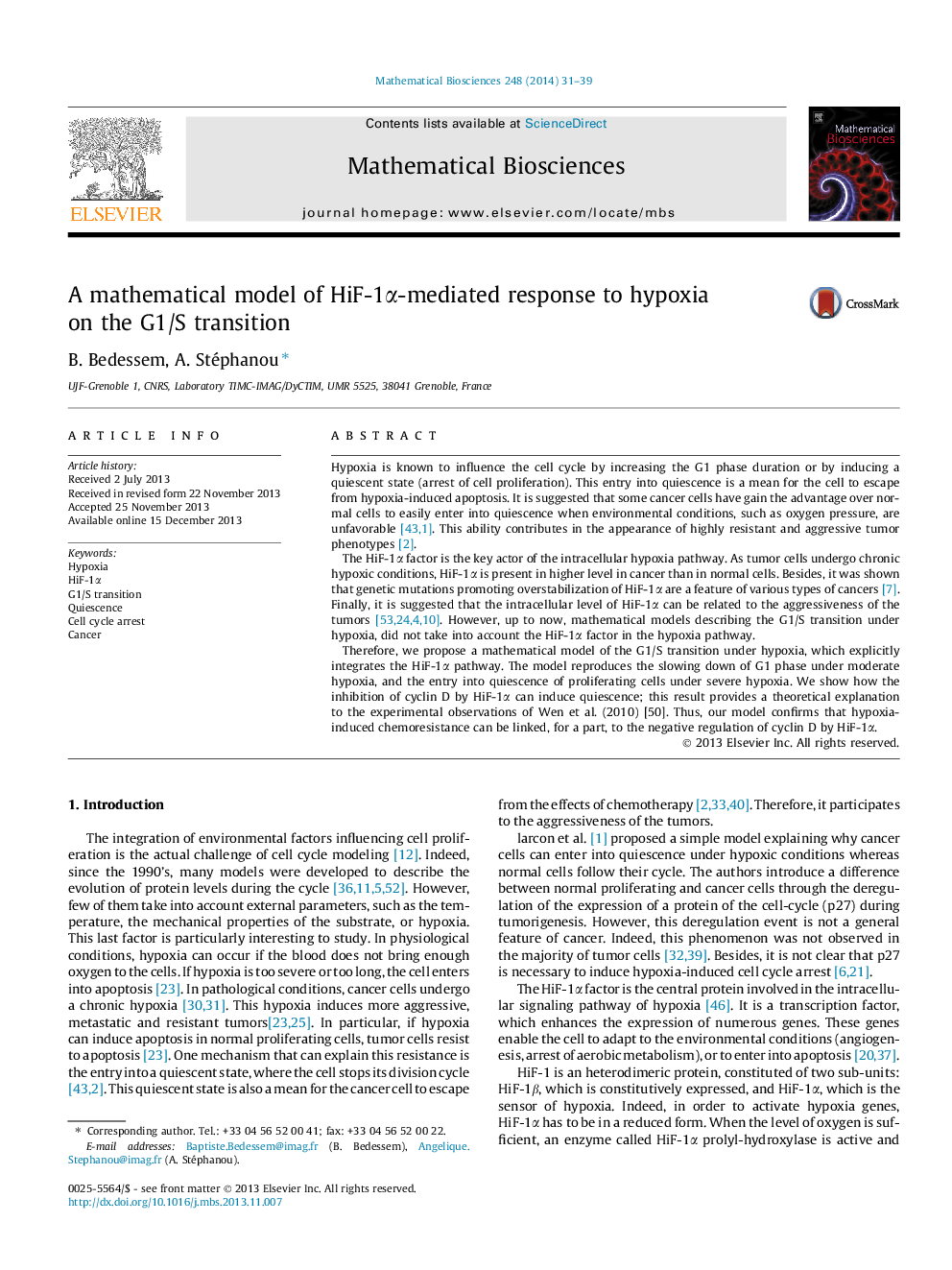| Article ID | Journal | Published Year | Pages | File Type |
|---|---|---|---|---|
| 4500114 | Mathematical Biosciences | 2014 | 9 Pages |
•The model describes the G1/S transition under hypoxia through the HiF-1αα pathway.•The inhibition of the cyclin D by HiF-1αα can affect the cell cycle.•A link between HiF-1αα overexpression and resistance to apoptosis is highlighted.•A simple explanation to recently published experimental results is given.•A tool to grade the resistance to hypoxia of tumor cells is provided.
Hypoxia is known to influence the cell cycle by increasing the G1 phase duration or by inducing a quiescent state (arrest of cell proliferation). This entry into quiescence is a mean for the cell to escape from hypoxia-induced apoptosis. It is suggested that some cancer cells have gain the advantage over normal cells to easily enter into quiescence when environmental conditions, such as oxygen pressure, are unfavorable [43] and [1]. This ability contributes in the appearance of highly resistant and aggressive tumor phenotypes [2].The HiF-1αα factor is the key actor of the intracellular hypoxia pathway. As tumor cells undergo chronic hypoxic conditions, HiF-1αα is present in higher level in cancer than in normal cells. Besides, it was shown that genetic mutations promoting overstabilization of HiF-1αα are a feature of various types of cancers [7]. Finally, it is suggested that the intracellular level of HiF-1αα can be related to the aggressiveness of the tumors [53], [24], [4] and [10]. However, up to now, mathematical models describing the G1/S transition under hypoxia, did not take into account the HiF-1αα factor in the hypoxia pathway.Therefore, we propose a mathematical model of the G1/S transition under hypoxia, which explicitly integrates the HiF-1αα pathway. The model reproduces the slowing down of G1 phase under moderate hypoxia, and the entry into quiescence of proliferating cells under severe hypoxia. We show how the inhibition of cyclin D by HiF-1αα can induce quiescence; this result provides a theoretical explanation to the experimental observations of Wen et al. (2010) [50]. Thus, our model confirms that hypoxia-induced chemoresistance can be linked, for a part, to the negative regulation of cyclin D by HiF-1αα.
